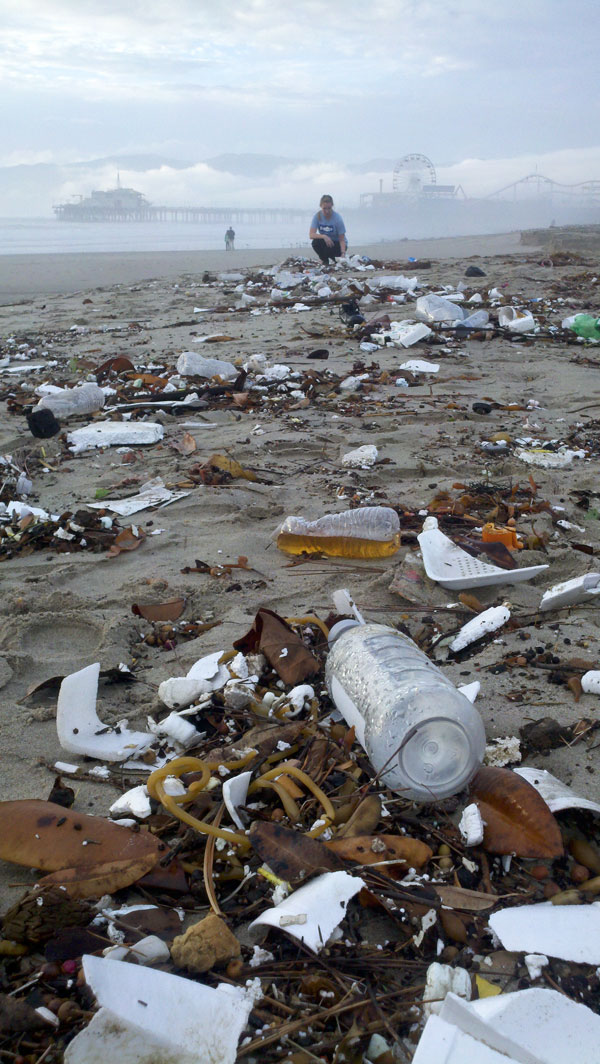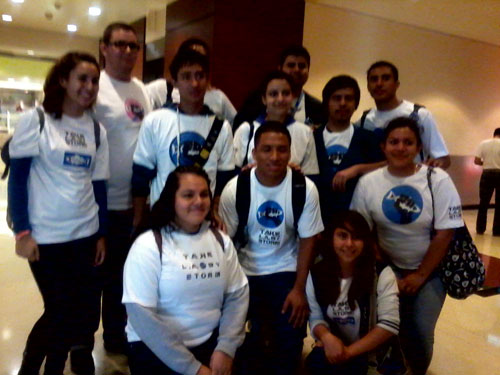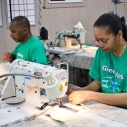I’m a patient woman, but I’ve had enough.
I realize I will never get back the countless hours I’ve spent in stuffy, over-crowded public hearings listening to endless complaints from California dischargers. I realize some dischargers might actually believe that upholding the federal Clean Water Act and implementing basic water quality protections in their community will bankrupt their cities or industry.
But ongoing public hearings about determining appropriate storm water pollution limits for Los Angeles County’s 84 cities have set a new low for wheel-spinning and economic fear-mongering – all at the expense of clean water for the region’s nearly 10 million residents.
Many of the cities regulated in a soon-to-be-released updated municipal stormwater permit came out to plead poverty due to water quality regulations at last month’s meeting of the Los Angeles Regional Water Quality Control Board. After months of debate, the board will issue the new permit this Thursday.
So what was all the fuss about?
Basically, any city that discharges water into the storm drain system, and ultimately the ocean, must abide by the regulations issued by the Regional Board as part of its permitting process. The rules require cities to implement different practices in their jurisdictions to ensure that their runoff doesn’t pollute local waterbodies. Examples of these requirements include building and maintaining trash capture devices at stormdrain outlets to ensure that debris doesn’t find its way into creeks, rivers and the ocean. Many of these requirements are basic practices, such as street sweeping, needed to maintain a healthy city aesthetic (permit or no permit).
During public hearings about the new permit, a long line of city managers came to the podium to relay dramatic stories of looming library closures and staff layoffs — all due to being compelled to implement water quality protections. They all urged the Regional Board to weaken existing and proposed limits.
Most notably, a city official from Vernon lamented that these proposed regulations would force his city to lay off 30-plus employees. Yes, you read that correctly – Vernon, the city that made headlines for lavishing huge salaries on top city officials. The city of 90 or so residents bankrolled million-dollar salaries and first-class air travel for its top managers. But now it can’t afford to keep its runoff free from metals, harmful bacteria and other pollutants before heading to the L.A. River and out to the beaches of Long Beach?
As Director of Water Quality at Heal the Bay, I work to convince decision-makers that our local waterbodies are well-worth protecting. It’s simple economics. Investing in clean water now will pay dividends for years to come. Nearly 400,000 jobs in Los Angeles County are ocean-related, responsible for $10 billion annually in wages and $20 billion in goods and services.
We’re a First World region, and we should have basic regulatory policies that reflect our commitment to clean water. Do we really want tourists coming to visit Los Angeles beaches and returning home with an illness after swimming in water polluted by urban runoff? Do we really want local resident feeding their family locally caught fish that contains DDT or PCB levels well above protective thresholds? Yet, the cities’ continued lobbying to weaken existing pollution requirements – and the board’s apparent willingness to consider their pleas – raises these troubling questions.
Waiting to testify at these protracted hearings, I often wonder how much truth there is in city managers’ assertions that spending on pollution prevention will perilously drain their coffers. So in advance of the October Regional Board hearing, our policy team did some digging that revealed this troubling fact: To curry favor with the Regional Board, a number of cities seem to be over-representing the amount of money that they are spending each year on complying with the permit.
Each year the cities must report to the Regional Board the actions they have taken to comply with the permit and the costs of implementation. We took a closer look at the reported expenditures in these Annual Reports to the Regional Board. In the latest release, we noticed a big red flag: the total spending on stormwater programs in 2011-12 by the 84 regulated cities and County was projected to increase 172% (237% when price adjusted) from the previous year. Such a dramatic increase in a single year is particularly glaring, given that overall stormwater spending since 2006 has decreased every year when price adjusted.
For example, Lynwood reported to the Regional Board that it would spend $10,679,915 more on stormwater projects in 2011-12 than it did the previous year –a fivefold increase. That kind of jump doesn’t pass the sniff test — $10 million in spending would equal more than 10% of the city’s entire annual budget. Lynwood may be doing some good work with stormwater pollution controls, but the reported numbers just didn’t seem plausible when compared to spending projections by cities with similar populations and geographic area.
As a next step, we took a sample of cities that showed the greatest single-year increase in proposed expenditures: Culver City, Diamond Bar, Lynwood, and South Pasadena. Comparing the four cities to other Los Angeles County cities with similar populations, land area and land area per capita, we continued to notice major discrepancies.
For example, South Pasadena projected to spend $28,697,450 to comply with the permit in 2011-2012, whereas Agoura Hills with a similar population size projected only $513,550 in spending. We simply can’t believe that South Pasadena is more vigilant about stormwater than Agoura Hills by a factor of 55. Comparing cities with similar geographic areas, South Pasadena projects to outspend San Marino, its nearby neighbor, by over $28 million.
To get to the bottom of this discrepancy, we examined the actual approved city budgets for cities in our sample. In the annual budget for Lynwood, managers claim to have had a storm water budget of $237,432 in 2010-11 and $313,140 in 2011-12. However, the numbers reported to the Regional Board were $2,308,085 and $12,988,000, respectively. We saw similar abnormalities in other cities.
Based on this cursory review, we have reached several conclusions:
- Some municipalities appear to have mischaracterized their stormwater expenditures in their Regional Board Annual Reports,
- City budgets and Regional Board-reported stormwater expenditures do not always match, and;
- These findings call into question the validity of financial complaints made in testimony at the hearings.
Even the board’s staff has uncovered inconsistencies. In a presentation at the October hearing, Executive Officer Sam Unger noted “non-uniformity” in reporting and said “not all costs reported can be solely attributable to compliance with the requirements of the L.A. County MS4 Permit.”
It’s important to note that not all dischargers are manipulating numbers. Many are abiding by the permit and trying hard to reduce their contribution to water pollution. Many city managers work creatively within the constraints of city budgets to create stormwater programs with high impact and relatively low public cost. For example, the City of Los Angeles and Santa Monica passed far-reaching Low Impact Development Ordinances on their own initiative, requiring developers to infiltrate and capture runoff on-site before it heads to the sea.
Unfortunately, many dischargers seem to be making an impact on Regional Board members and staff with their emotional testimony – even if their numbers don’t add up.
The latest version of the permit is a major weakening from a draft issued in June without any sufficient justification. These changes may trim some city budgets, but to what end? Any short-term cutbacks in stormwater investments will maintain the status quo of dirty water and will come at a great cost to our ocean economy and our environment down the line.
As our case studies demonstrate, the Regional Board seems to be responding to a group of Chicken Littles crying disingenuously that the sky is falling due to environmental regulations.
The Regional Board will make a final decision on the permit at its Thursday hearing. I’m sure I’ll hear many more pleas of poverty due to environmental protection. I’m still hoping that the Regional Board will see that light and follow its sworn duty to safeguard our region’s water quality.
Vernon may be having major budgetary problems, but I’m certain they aren’t due to water quality regulations.
–– Kirsten James
Water Quality Director, Heal the Bay
Join us November 8 at the public hearing on the revised draft of the stormwater permit.
This grassroots campaign needs your donations to stop the attack on clean water.
Sign up for our Action Alerts to stay up to date on the Take L.A. by Storm campaign, or follow us on Twitter for real-time updates with the hashtags #LAbyStorm and #CleanWater.







 We’d long known
We’d long known